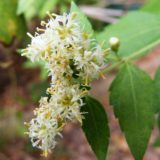Comprehensive List of Tribal Drinks With Psychoactive Drugs

Psychoactive Drinks Used By Indian Tribes
For as long as is known of tribal history, in nearly any region around the earth, tribes have used plants for their psychoactive properties in the preparation of a variety of drinks. Some of the drinks which have been used by tribes throughout the years are ceremonial in purpose, while others are recreational. Regardless of the reason, it is astounding how many plants have been utilized even in ancient cultures for their psychoactive effects. Some of the drinks may be more complex than others in preparation. There are also some drinks which have multiple ingredients, or additional plants that are required in order to activate the psychoactive effects. And some of these plants are merely additives for other drinks entirely.
Full List of Tribal Drinks With Psychoactive Effects
While most of these drinks are hallucinogenic, some are merely psychoactive, or provide psychoactive effects when combined with other plants. These plants are all somehow used in a native, religious, or tribal way to at least one culture in some part of the world.
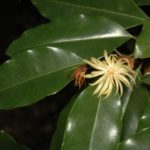 Agara (Galbulimima belgraveana)
Agara (Galbulimima belgraveana)
Agara is well known throughout New Guinea and has been traditionally prepared as a tea. It is a highly intoxicating and hallucinogenic drink, and is well known for its vision inducing properties.
Angel’s Trumpet (Brugmansia arborea)
Angel’s Trumpet is native to the Amazon and tropical regions of South America. There are a number of tribes which have used this plant to make a tea, or to be added to other beverages. The Sibundoy and Chibcha tribes are very well known for using Angel’s trumpet as a beverage.
Ayahuasca (Banisteriopsis caapi; B. inebrians; Diplopterys cabrerana)
This is one of the most versatile of the psychoactive drinks, as it has been employed for a variety of uses ranging from recreation to religious divination and everything in between. It is most commonly prepared in South America, specifically in the Western half of the Amazon Valley, as well as throughout Columbia and Ecuador. It is well-known throughout Central America and Mexico as well, though much less commonly prepared. Typically a drink is prepared by boiling the bark of Banisteriopsis caapi.
 Badoh Negro (Ipomoea violacea)
Badoh Negro (Ipomoea violacea)
The Ipomoea plant is native in Mexico and well known by the ancient cultures there. It was very common to see this plant turned into a drink prepared from the crushed seeds and used for a variety of religious purposes (including divination and curing/diagnosis).
Blue Water Lily (Nymphaea ampla)
The Blue Water Lily was commonly found and used throughout Asia, Egypt, and Mexico. It was especially popular during the times of the Mayans and ancient Egyptians. The buds of this flower have been used to brew a powerful tea that is extremely significant by shamans of all cultures.
Caapi-Pinima (Tetrapteris methystica)
The Caapi-Pinima plant is well-knonw among the Maku Indians in Brazil and has also been used by tribes in Colombia for its intoxicating and hallucinogenic effects. The drink itself is prepared from the bark and is served (as well as prepared) cold. It typically looks yellow to brown in color.
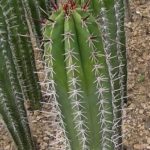 Cawe (Pachycereus pecten-aboriginum)
Cawe (Pachycereus pecten-aboriginum)
The Tarahumara Indians were famous for employing a variety of plants for their psychoactive effects. Some of them were prepared as drinks. The Cawe plant was a strong hallucinogen. It is a cactus that had been used for a variety of medical purposes within the tribe. The drink itself is made from the juice of the younger branches.
Chacruna (Psychotria viridis)
Many tribes throughout the Amazon have used this as an ingredient in their Ayahuasca drink. The fresh leaves are dried and then cooked along with other ingredients.
Chiricaspi (Brunfelsia chiricaspi)
Chiricaspi is employed heavily throughout Columbia, where the Indians create a cold concoction that is usually used as an additive to an ayahuasca beverage. This is also done within the Kofan (Colombia) and the Jivaro (Ecuador) tribes.
Common Reed (Phragmites australis)
This reed is most commonly used for its high DMT content. Although there are a number of beverages prepared from Common Reed in many tribes, it is a very common ayahuasca analog.
 Datura (Datura metel)
Datura (Datura metel)
Datura is one of the most well-known plants used for psychoactive reasons in ancient. There are many writings about it dating far back throughout the Old World. Physicians, medicine men, shaman, religious figures, and other scientist-like individuals can be found citing Datura for its psychoactive and medicinal uses throughout many cultures and history. As a drink it is typically enjoyed with wine as an additive. It is very commonly used as a ceremonial intoxicant. It can also be found in many recreational celebrations.
El Nene (Coleus blumei)
El Nene is native to the Philippines and Mexico. The leaves are typically grounded or chewed and then combined with water to form a psychoactive drink. It is said to offer the user powerful visions of the future and the past (divination).
Fly Agaric (Amanita muscaria)
The Fly Agaric mushrooms grow diversely around the globe in modern times (probably due to cultivation and intentional spreading). They have been widely regarded as a sacred, religious plants of the gods. There is especially a lot of spiritual emphasis placed on the mushrooms in India, as well as within several Native American tribes (North America). The drink itself is made from the extract of the mushrooms combined with water or reindeer milk. Sometimes the extract is combined with other psychoactive plants in order to intensify the effects. In some cultures (for example, Siberian tribes), people drink the urine of those who have consumed the Fly Agaric mushrooms and supposedly it provides special hallucinogenic effects.
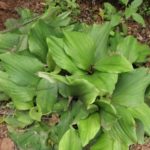 Galanga (Kaempferia galanga)
Galanga (Kaempferia galanga)
The Galanga plant is a popular hallucinogen throughout New Guinea. Tribes there create a tea from the leaves of the plant. Not only is it hallucinogenic, but it also smells and tastes great!
Hierba de la Pastora (Salvia divinorum)
Although Salvia divinorum is typically smoked, some tribes throughout Mexico, most notably the Maazatecs, create a beverage from the plant. The leaves need to be chewed or otherwise crushed, and then they can be combined with water to create the powerful hallucinogenic drink.
Jurema (Mimosa hostilis)
Jurema is an ancient hallucinogenic drink which does not appear to be used today. The root of the plant used to be prepared into a special hallucinogenic drink which the natives (tribes throughout Brazil) called “miraculous”.
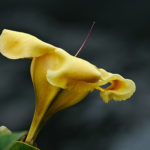 Kieli (Solandra brevicalyx)
Kieli (Solandra brevicalyx)
Kieli, also called Huiepatl, is mentioned in many texts for its religious and tribal use as a psychoactive drink. The Huichol considered Kieli a sacred plant and often used it for many spiritual-magico purposes. The plant can be used to prepare a powerful intoxicant, a tea made from the juice of the branches.
Koribo (Tanaecium nocturnum)
Koribo is very popular among the indians of Karitiana. The Karitiana are native to the Brazilian part of the Amazon. The Choco of Colombia also used Koribo. The leaves of this liana are brewed into a tea that is used to treat diarrhea.

Kratom (Mitragyna speciosa)
Native to Asia, create them use to only be popular in the Orient. Today, create them is enjoyed around the world as one of the most well-known ceremonial teas. The drink is a powerful intoxicant and can be found in a number of religious rituals. Creative is also very commonly enjoyed for recreational purposes. Creative has become more popular in Western cultures.
Mescal Bean (Sophora secundiflora)
Mescal Beans are one of the most commonly used, and historically used psychoactive plants known to man. There is evidence that Mescal Beans have been used in rituals more than 9000 years ago. Many Native American tribes, as well as Mexican Indians, have employed the beans for their divination, vision seeking, hallucinogenic, or social lubricant properties. The drink is prepared from the red beans, but can be fatal in high doses (so caution is always advised).
Nightshade (Scopolia carniolica)
So many species of the nightshade family have been used for their intoxicating, hallucinogenic, or otherwise psychoactive properties. Scopolia carniolica is used as an intoxicant and typically found growing in Europe. Today, it is most commonly found as a beer additive.
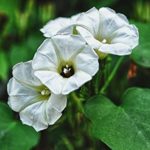 Ololiuqui (Turbina corymbosa)
Ololiuqui (Turbina corymbosa)
Ololiuqui is one of the most well known hallucinogens used by ancient and modern tribes alike. The seeds of this plant (a member of the Morning Glory family), are considered a sacred plant to the Aztecs, Chinatec, Mazatec, Mixtec, Zapotec, as well as a number of the Native American tribes. The drink is used as a stress reliever, problem solver, in general hallucinogen. The seeds must be treated and drink preparation is a little on the complex side.
Paguando (Iochroma fuchsioides)
This plant is well-known in the Sibundoy and Kamsa tribes of Colombia. The shaman of these tribes use the bark and leaves to boil a powerful tea. The hallucinogenic tea is intoxicating and reportedly unpleasant, but used as a last-resort type of medicine in these cultures for some ailments and medical diagnostics purposes.
Peyote (Lophophora diffusa)
Peyote is sometimes referred to as Hikuri. It is well known throughout Mexico and Central America, and was very famously employed by the Aztec Indians. It is still used today by the Tarahumara, Huichol, and other Mexican Indians. It is also used by the Native American Church (United States and Canada). The cactus is brewed into a special ceremonial tea that gives intense, visual experiences often referred to as “vision quests.”
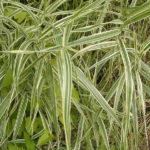 Reed Grass (Phalaris arundinacea)
Reed Grass (Phalaris arundinacea)
Reed Grass was well known even in older times, and written about on many occasions; However, the grass is only become popularly used for its psychoactive effects in recent times. It is most commonly found employed as in ayahuasca analog. The leaves create an extract which is used to prepare a special “visionary” drink. The grass relies on its high DMT content for its psychedelic properties.
Saguaro (Carnegiea gigantea)
The Sanguaro cactus is very common throughout Mexico and has many traditional Indian uses. The Seri tribe of Sonora use a tonic made from Sanguaro to fight rheumatism. It is also very common to find as a wine additive.
San Pedro (Trichocereus pachanoi)
The San Pedro cactus is one of the most important hallucinogenic cacti. It is native to South America and most commonly found in Peru, Ecuador and Bolivia (especially in the Andes. The stem is sliced finally and boiled for a period of 2 to 12 hours. Sometimes other plants are added to the concoction. The resulting beverage is said to provide amazing effects of divination, diagnosis of disease, and the ability to assume someone else’s identity.
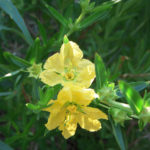 Sinicuichi (Heimia salicifolia)
Sinicuichi (Heimia salicifolia)
Sinicuichi is employed as a sacred, ceremonial drink throughout many Mexican tribes. It is a hallucinogen in high doses, and a simple intoxicant in lower doses. A drink is made with water and a fermentation process. It is commonly used as a recreational drink due to its ability to amplify the positive effects of a social gathering.
Taique (Desfontania spinosa)
Taique has been most heavily used in Chile and Colombia. The Kasma tribe is known for using it as a medicinal, diagnostic drink. Shaman and medicine men use the drink to dream. The leaves and fruit are both used to brew a powerful tea that can give vivid visions.
Jimsonweed, Thorn Apple (Datura stramonium)
Jimsonweed is feared by many but also respected by the Algonquin and many Inidan tribes of the Old and New Worlds alike. It is very commonly used for initiation rituals and is a strong hallucinogenic ingredient in the Algonquin drink “Wysoccan.”
Toloache (Datura innoxia)
The Tarahumara are known to use Datura innoxia to make a special beer. It has many other medicinal and recreational, as well as religious uses throughout ancient cultures (Aztecs, Zuni, and many other tribes). Many priests have used the plant. It has even been used as an analgesic.
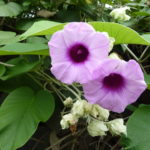 Wood Rose, Hawaiian Wood Rose (Argyreia nervosa)
Wood Rose, Hawaiian Wood Rose (Argyreia nervosa)
Wood Rose is one of the most sacred plants of Nepal. It grows most heavily in the Nepal and China regions, however, was transported for cultivation in Hawaii, thus being given the nickname “Hawaiian Wood Rose.” It can be a powerful hallucinogen due to its high content of LSA. The seeds are typically grounded or crushed and then mixed with water to form a psychoactive drink.
Zacatechichi (Calea zacatechichi)
Zacatechichi is very commonly employed by the Chontal Indians of Oaxaca. They use it to help clarify the senses and to also treat a variety of ailments and problems (including diarrhea, for example). Typically the leaves are dried and then crushed, and prepared into a powerful tea. The drink can be a hallucinogen in medium to high doses.
Last Words: Sacred Use of Plants in Tribal Drinks
There are so many plants on earth which have yet to be identified or fully investigated. There are psychoactive effects in so many plants which have yet to be understood. Understandably, most of the plants used for their psychoactive effects today, have been well-known for their psychoactive properties even dating back to ancient times. Many of the natural remedies, herbal teas, supplements and other medicines which are used for their efficiency and reliability in today’s pharmaceutical arsenal, were first proven effective in tribal medicine. Many of the recreational drugs that come from natural plants taken today, have been employed by the Indians and tribes in some part of the world for centuries. Even many of the research chemicals that have flooded the markets, are analogs constructed to closely resemble commonly used psychoactive plants that are well known hallucinogens.



